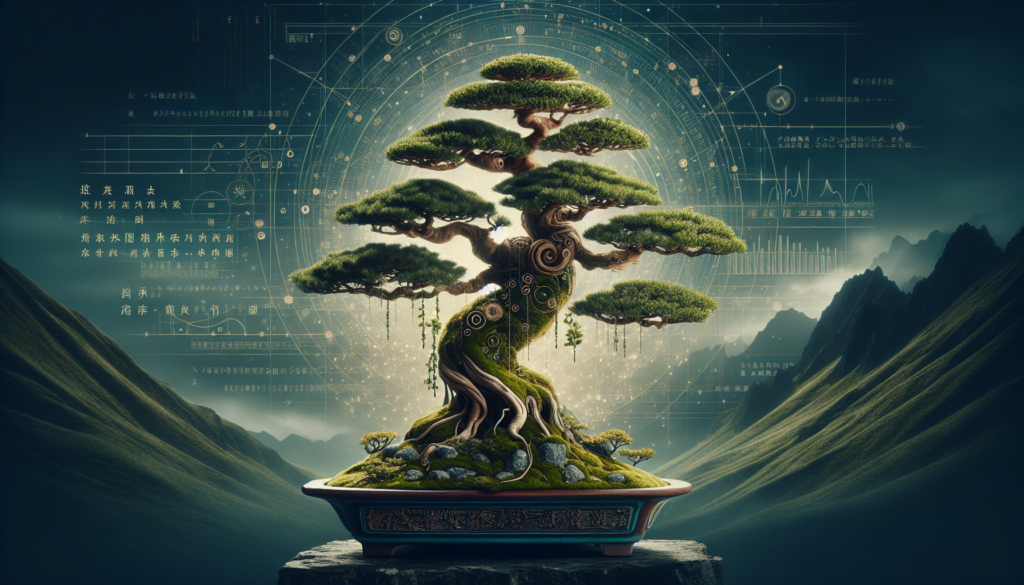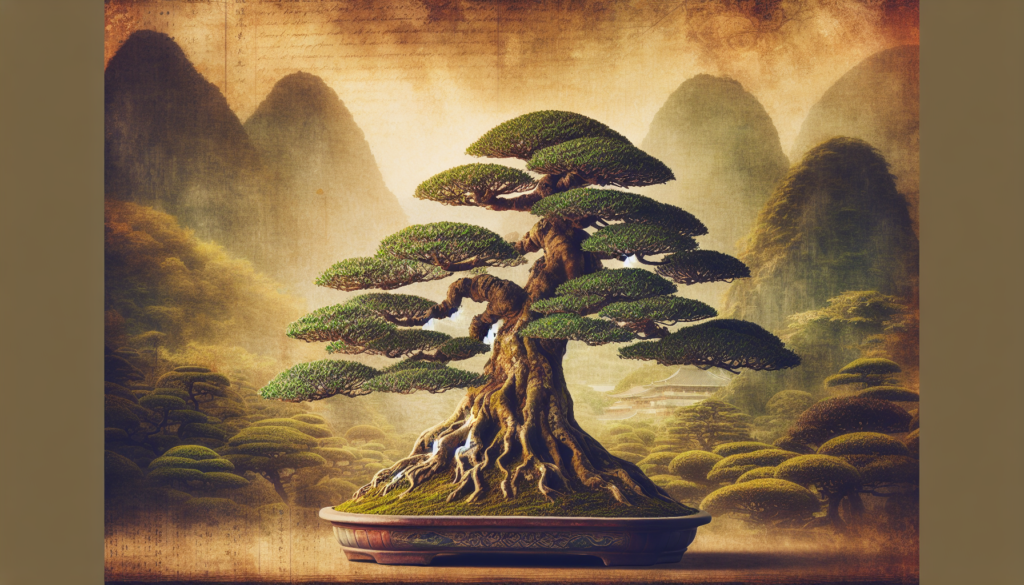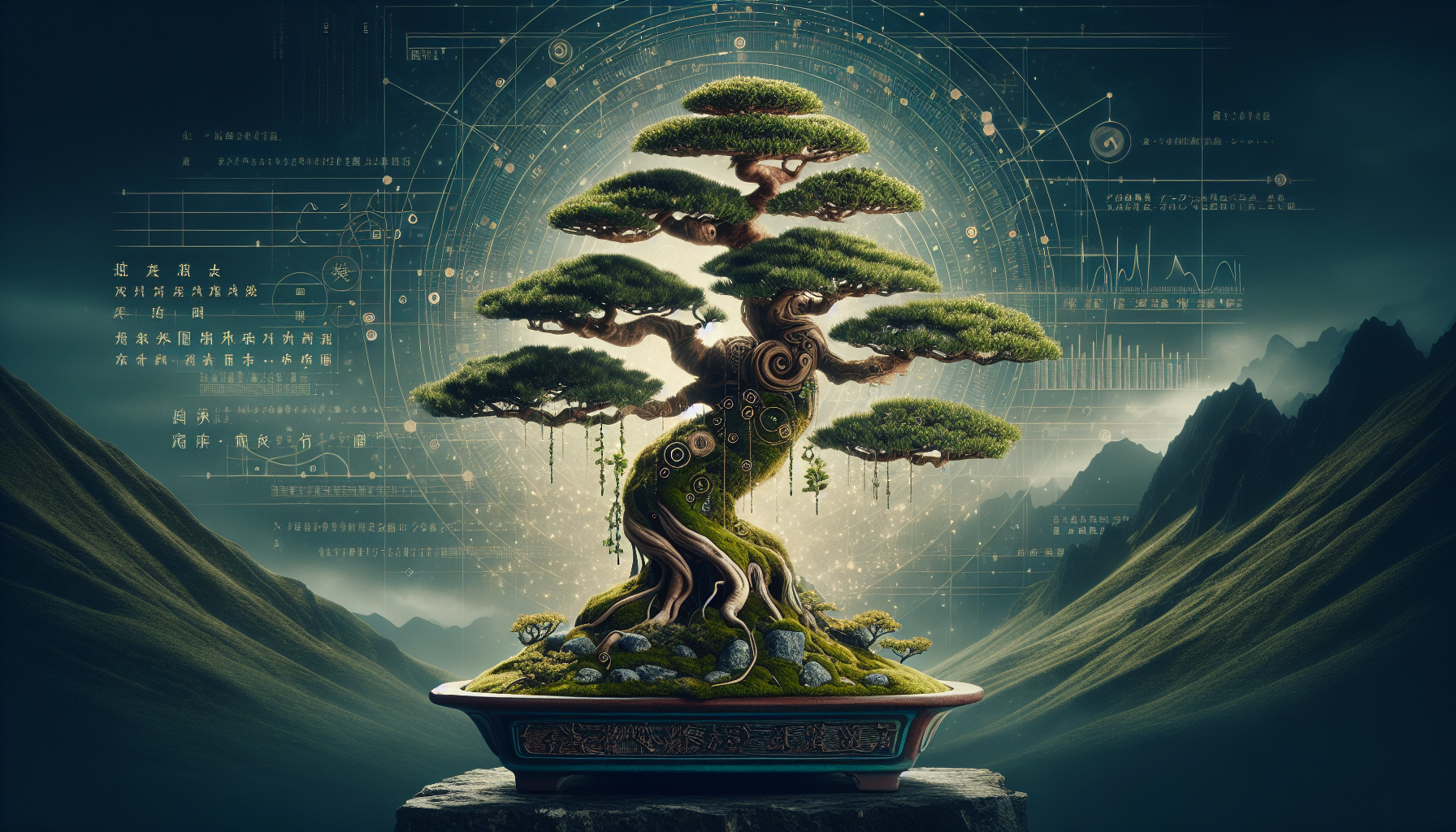Step into the enchanting world of rare bonsai trees and uncover the mesmerizing beauty that lies within these miniature masterpieces. From the delicate Japanese Maple to the striking Monkey Puzzle, each rare bonsai has its own story to tell. Delve into the artistry and complexity of caring for these ancient living sculptures, and discover the secrets behind their rarity and desirability. Embark on a journey of awe and wonder, as you explore the fascinating world of rare bonsai trees.

Understanding Bonsai Trees
Bonsai trees are miniature versions of full-size trees that have been cultivated in containers. The art of growing and shaping these trees has been practiced for centuries, originating in ancient China and Japan. Bonsai trees are known for their intricate designs and delicate beauty, making them a popular choice for plant enthusiasts and collectors.
Defining Bonsai
Bonsai, which translates to “tray planting” in Japanese, is the art of growing and shaping trees and shrubs in miniature form. The goal is to create a living sculpture that resembles a full-size tree, but in a much smaller scale. Bonsai trees are carefully grown and pruned to mimic the appearance and proportions of their larger counterparts, emphasizing harmony, balance, and natural beauty.
The History of Bonsai
The art of bonsai originated in ancient China over a thousand years ago and was later introduced to Japan, where it flourished and became deeply ingrained in Japanese culture. Originally, bonsai trees were grown by monks in temples as a way to bring nature into their living spaces. Over time, bonsai evolved from a spiritual practice to a respected art form, passed down through generations.
Importance and Symbolism of Bonsai Trees
bonsai trees hold a significant cultural and symbolic value in the countries where they originated. In both China and Japan, bonsai is associated with harmony, tranquility, and a deep appreciation for nature. These miniature trees are believed to represent the beauty and essence of the natural world, offering a sense of calmness and connection with the environment. Bonsai trees are also considered to be a symbol of patience, discipline, and the passing of time.
The Art of Bonsai Creation
Creating a bonsai tree involves several steps and techniques to achieve the desired shape, style, and overall appearance. It requires a deep understanding of horticulture, as well as an artistic eye for design.
Steps in Bonsai Creation
The process of creating a bonsai tree begins with selecting a suitable tree species or shrub. The chosen plant should have the potential to develop into a bonsai form and display the desired characteristics. This is then followed by careful pruning and shaping of the branches and roots. Wiring is often used to guide the growth and achieve the desired shape. As the tree matures, regular maintenance and care are crucial to preserve its health and aesthetics.
Techniques used in Bonsai Shaping and Styling
Several techniques are employed in shaping and styling bonsai trees. These include pruning, which involves trimming branches and foliage to create balance and proportion. Wiring is another essential technique used to bend and shape the branches, allowing the tree to be molded into the desired form. Additionally, techniques such as grafting and air layering are sometimes used to introduce new branches or create interesting features in the bonsai tree.
Maintaining a Bonsai Tree
maintaining a bonsai tree requires regular care and attention. Proper watering techniques are essential to ensure the tree’s health and prevent root rot or dehydration. Bonsai trees also require adequate sunlight, although the exact lighting requirements can vary depending on the species. Pruning should be done regularly to maintain the shape and remove any dead or unwanted branches. Additionally, the bonsai tree’s soil composition should be suitable for its specific needs.
Types of Bonsai Trees
Bonsai trees come in a wide variety of species, each offering unique characteristics and styles. Understanding the different types of bonsai trees can help enthusiasts choose the right tree for their preferences and skill level.
Common Types of Bonsai Trees
Some of the most common types of bonsai trees include the Japanese maple (Acer palmatum), Chinese elm (Ulmus parvifolia), juniper (Juniperus), and pine (Pinus). These trees are popular choices for bonsai due to their adaptability, aesthetic appeal, and ease of care. Each species lends itself to different styles, such as the formal upright, informal upright, cascade, or broom.
Factors Determining the Types of Bonsai Trees
Several factors determine the types of bonsai trees suitable for specific individuals. Personal preference and aesthetic appeal play a significant role in choosing a bonsai tree. Additionally, the climate and environmental conditions of a particular region can dictate which species will thrive. The level of experience and skill in bonsai cultivation is also a crucial factor, as some species require more advanced techniques and care.
Introduction to Rare Bonsai Trees
Rare bonsai trees are highly sought after by collectors and enthusiasts due to their unique characteristics, rarity, and often higher value. These trees require specialized care and are treasured for their scarcity and distinctive features.
Defining Rare Bonsai Trees
Rare bonsai trees refer to those species that are uncommon or rare to find in the world of bonsai cultivation. These trees are often sought after for their scarcity, historical significance, or unique attributes that set them apart from more common bonsai varieties.
Why some Bonsai Trees are Considered Rare
Various factors contribute to the rarity of certain bonsai trees. Some species may be native to a specific region or have limited distribution, making them harder to obtain. Others may have unique characteristics or features that are not commonly found in other bonsai varieties. Additionally, rare bonsai trees can be the result of years of careful cultivation and refinement, with only a limited number available in the market.

Examples of Rare Bonsai Trees
Rare bonsai trees encompass a wide range of unique varieties, each with its own distinct characteristics and appeal. These trees offer a glimpse into the extraordinary diversity and beauty that can be found within the world of bonsai cultivation.
Unusual Bonsai Tree Varieties
Some examples of unusual bonsai tree varieties include the Ginkgo biloba, which is renowned for its fan-shaped leaves and stunning autumn colors. Another rare species is the Baobab tree (Adansonia), known for its distinctive bottle-shaped trunk and ability to store vast amounts of water. The Monkey Puzzle tree (Araucaria araucana) is also considered rare due to its unusual foliage and impressive stature.
Characteristics of Rare Bonsai Trees
Rare bonsai trees often possess unique features that make them stand out. This might include unusually shaped trunks, vibrant or rare color variations, or distinctive foliage patterns. Some rare bonsai trees also have historical or cultural significance, adding to their appeal and value.
Distribution and Habitats of Rare Bonsai Trees
Rare bonsai trees can originate from various regions around the world, each with its own unique climate and conditions. Some rarities may be endemic to specific habitats, making them harder to find and cultivate. For example, certain species may only thrive in mountainous regions, while others may require specific soil types or humidity levels for optimal growth.
Cultivation of Rare Bonsai Trees
Cultivating rare bonsai trees requires expertise and specialized knowledge. These unique varieties often have specific care requirements and may pose challenges that differ from more common bonsai species.
Challenges in Cultivating Rare Bonsai Trees
Rare bonsai trees can present challenges due to their delicate nature, specific environmental requirements, or susceptibility to certain diseases or pests. Some rare species may require precise temperature or humidity levels, making them more challenging to grow in certain climates. Additionally, the limited availability of specific species can make the cultivation and propagation of rare bonsai trees more complicated.
Techniques and Tips for Growing Rare Bonsai Trees
Growing rare bonsai trees successfully involves understanding the unique needs of each species and providing appropriate care. Researching the specific requirements of a particular rarity is vital, including factors such as light, temperature, watering, and soil composition. Regular monitoring and adjusting to the tree’s needs is crucial for optimal growth and health. Seeking guidance from experienced bonsai growers or joining bonsai societies can provide valuable knowledge and support.
The Role of Grafting in Rare Bonsai Trees Cultivation
Grafting is a technique commonly used in bonsai cultivation, particularly when dealing with rare species or when specific characteristics need to be enhanced. Grafting involves joining a branch or scion from one tree onto the rootstock of another. This technique allows for the combination of desirable features from different trees, helping to create unique and visually appealing bonsai specimens.
Care and Maintenance of Rare Bonsai Trees
Proper care and maintenance are crucial to the health and longevity of rare bonsai trees. These unique specimens require attention to detail and regular monitoring to ensure optimal growth and overall well-being.
Proper Watering Techniques
Watering rare bonsai trees requires careful consideration, as different species have specific water requirements. It is important to avoid overwatering or underwatering, as both can lead to detrimental effects on the tree. Monitoring the soil moisture, observing the tree’s response, and adjusting watering frequency accordingly is crucial for maintaining a healthy balance.
Pruning Rare Bonsai Trees
Pruning is an essential aspect of bonsai care, and it becomes even more critical when dealing with rare varieties. Regular pruning helps maintain the desired shape and form of the bonsai tree while promoting healthy growth. Each species may have different pruning requirements, and understanding the specific needs of a rare bonsai tree is essential for achieving optimal results.
Importance of Light and Temperature
Light and temperature are critical factors in the care of rare bonsai trees. Understanding the lighting requirements of a particular species is essential for ensuring proper growth and foliage development. Some rare bonsai trees may require shade or filtered light, while others thrive in direct sunlight. Similarly, maintaining suitable temperature conditions is crucial, as extreme variations can negatively impact the tree’s health and vitality.
Disease Control and Prevention in Rare Bonsai Trees
Rare bonsai trees, like any other plants, are susceptible to diseases and pests. Regular observation and inspection can help identify signs of disease or pest infestations early on. Implementing appropriate preventive measures, such as proper hygiene practices, providing adequate airflow, and using organic pest control methods, can help maintain the health of rare bonsai trees.
Conservation of Rare Bonsai Trees
Rare bonsai trees face various threats that can endanger their survival. Conservation efforts are crucial to protect and preserve these unique specimens for future generations to appreciate and enjoy.
Threats to Rare Bonsai Trees
Rare bonsai trees face threats such as habitat destruction, illegal collection, and the impact of climate change. The destruction of natural habitats can result in the loss of specific species, making them even rarer in the bonsai world. Illegal collection or unethical practices can deplete wild populations and disrupt ecosystems. Additionally, climate change can alter the environmental conditions required for the growth and survival of rare bonsai trees.
Conservation Efforts for Rare Bonsai Trees
Conservation efforts for rare bonsai trees involve various initiatives aimed at preserving these unique specimens. Efforts range from habitat protection and restoration to promoting sustainable practices in bonsai cultivation. Cooperation between bonsai enthusiasts, educational institutions, and environmental organizations can help raise awareness and facilitate conservation efforts.
The Role of Bonsai Societies in Conservation
Bonsai societies play a vital role in the conservation of rare bonsai trees. These organizations bring together bonsai enthusiasts, professionals, and experts to share knowledge, promote ethical practices, and facilitate conservation initiatives. Bonsai societies often organize educational events, exhibitions, and workshops, providing a platform for learning, networking, and conservation advocacy.
The Market for Rare Bonsai Trees
The market for rare bonsai trees has grown significantly over the years, driven by the passion and appreciation for these unique specimens. Collectors and enthusiasts are willing to invest in rare bonsai trees, considering them as valuable additions to their collections.
Purchasing Rare Bonsai Trees
Purchasing rare bonsai trees can be an exciting and rewarding experience. There are various avenues for acquiring these unique specimens, including bonsai nurseries, specialty sellers, auctions, and online marketplaces. It is essential to research and seek reputable sources to ensure the authenticity and quality of the rare bonsai trees.
The Economics of Rare Bonsai Trees
Rare bonsai trees can command high prices in the market, particularly those that are highly sought after or possess exceptional characteristics. The rarity, age, size, and overall aesthetics of a rare bonsai tree contribute to its market value. The economics of rare bonsai trees can be influenced by factors such as supply and demand, trends in the bonsai market, and the reputation of the tree’s creator or previous owners.
Future Trends in Rare Bonsai Market
The future of the rare bonsai market is expected to continue evolving as more enthusiasts appreciate the beauty and rarity of these unique specimens. Trends may include increased interest in specific species or styles, the emergence of new hybrid varieties, and a growing emphasis on sustainability and ethical sourcing. Cultural shifts and changing tastes can also influence future trends in the rare bonsai market.
The Cultural Significance of Rare Bonsai Trees
Rare bonsai trees hold a cultural significance that extends beyond their aesthetics and monetary value. These living works of art have captivated people throughout history and continue to be revered and celebrated in various cultural contexts.
Rare Bonsai Trees in Art and Literature
Rare bonsai trees have been a subject of inspiration for artists and writers for centuries. Their intricate designs, symbolism, and timeless beauty have been captured in paintings, poetry, and literature. The art of bonsai has long been associated with creativity, mindfulness, and the pursuit of perfection, making it a rich source of artistic inspiration.
Celebrity and Royal Affinity for Rare Bonsai Trees
Rare bonsai trees have also captured the attention of celebrities and members of royalty around the world. These unique specimens are often prized possessions, adorning the homes and gardens of the privileged. The fascination with rare bonsai trees among the elite highlights their exclusivity and cultural significance.
Rare Bonsai Trees in Religious and Philosophical Contexts
In religious and philosophical contexts, rare bonsai trees symbolize spiritual enlightenment, harmony, and the interconnectedness of all living things. The art of bonsai cultivation is often associated with Zen Buddhism, where it is used as a meditative practice to promote mindfulness, patience, and tranquility. Rare bonsai trees embody the principles of balance and impermanence, offering a deep philosophical reflection on the nature of existence.
In conclusion, rare bonsai trees represent the epitome of horticultural artistry and cultural significance. These unique specimens possess a beauty and value that transcends their small size, captivating collectors and enthusiasts alike. While their cultivation and care may present challenges, the rewards in terms of aesthetics and personal satisfaction are immeasurable. By understanding and appreciating rare bonsai trees, we can continue to preserve and celebrate their remarkable beauty for generations to come.








